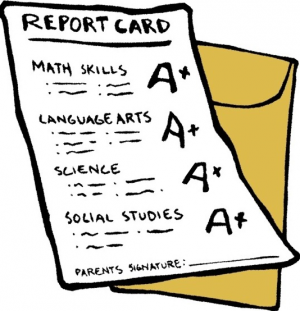
The Department of Education in Ohio has released the 15-16 report cards for schools. Do you understand what makes up the components that the State uses to give each school a grade? If you do great! If you are like me, then we need a better understanding. Let’s explore. Since this is the first year Ohio is going to grade all 6 components; I want to know what the components are that make up the grade level, and why they are important. Let’s dig a little deeper into each of them and find out!
Take an Ohio Practice Test Online
Achievement:

The Achievement Component is the first portion that determines the overall grade for the school. Achievement grades the school on how well their students did on the Ohio State Testing that was given last spring. The student’s test scores are compared to what the state has determined as a proficient threshold.
This portion is important because it shows if the students in the school are meeting grade-level expectations that the state has set. In addition, it will show how far above or below the students are compared to other schools in the state. In considering this segment of the report, one can realize the importance of ensuring that students are prepared for the State testing system. The Achievement section will make up 1/6th of the school’s overall grade!
Progress:
The Progress section will look at the student’s past performance, and compare it to this year’s assessment scores. All students will be scored for this part of the grade for the school. The Progress portion of the report card is important because all students should make progress regardless of learning status should make progress from one year to another. If they don’t they will fall behind.
Parents expect progress from one year to another. If they don’t see it they are not going to be happy. This will help to track the progress and see how the school is doing to validate that progress for every student is obtained.
Gap Closing:
Closing the Gap looks at the most vulnerable portion of the school’s population. This component will look specifically at how well the school is doing in ELA, Math and course completion. Closing the achievement gap will ensure that student will be successful going forward. So this aspect is very important.
All student populations are expected to make progress. When a target group is not, the district must make efforts to identify areas of concern and address them to show growth and improvement. Identifying the segment of the student population that is not progressing is a responsibility of the district.
Graduation Rate:
In this component, the 4 year and 5-year graduation rates are looked at and scored. The state looks at how many students graduated in the 4 and 5-year plans. The Graduation Rate should increase providing students the skills and foundation necessary to enter college or the workforce.
The 5-year rate is examined in regards to measuring how effective districts and schools are at helping students that needed an extra year to complete graduation. It gives them credit for reducing the dropout percentage thereby completing their required coursework for high school graduation.
K-3 Literacy:
In the K-3 Literacy component of the report, the state uses data to determine how successful schools are at getting their preschool and primary school students proficient in literacy development by the end of 3rd grade. In Ohio, the 3rd-grade reading guarantee ensures that all students that go into the 4th grade are at a 3rd-grade reading level prior to leaving 3rd grade.
This component is very important because how well a student does at early reading is normally a prediction on how they will progress throughout their upper school years. Ensuring that all students are at grade level at 3rd grade helps to ensure they will continue to progress in future grades.
Prepared for success:

In this component, the school is measured on how well they have prepared the students for success not only in college but to go out into the workplace. The state looks at a variety of different things for this grade. They look at honor diplomas, College entrance exam grades, and industry-recognized credentials .
Prepared for success is important because just graduating isn’t enough. The state wants to see how prepared the students are beyond the high school experience regardless of the students’ future plans. Students need to be prepared for the “real-world”. All districts are required to provide a plan on how to offer college credits to their high school students.
After reviewing the 6 different components that are used to score both districts and schools for this year,we need to remember that not all of these components will be applicable to all schools. The Ohio Report Card has been established to do an overall assessment for school officials, and parents so that the general public is aware of the overall rating of each school and district. The grading system allows schools and districts to compare themselves to others of similar demographics and size. If a school of similar size is doing better than they can look into what they are doing to improve, and try to make it work in their unique school environment.
I hope this overview of each of the components of the Ohio Report card is helpful to each of you. Please feel free to comment on anything I might have missed in this overview.
